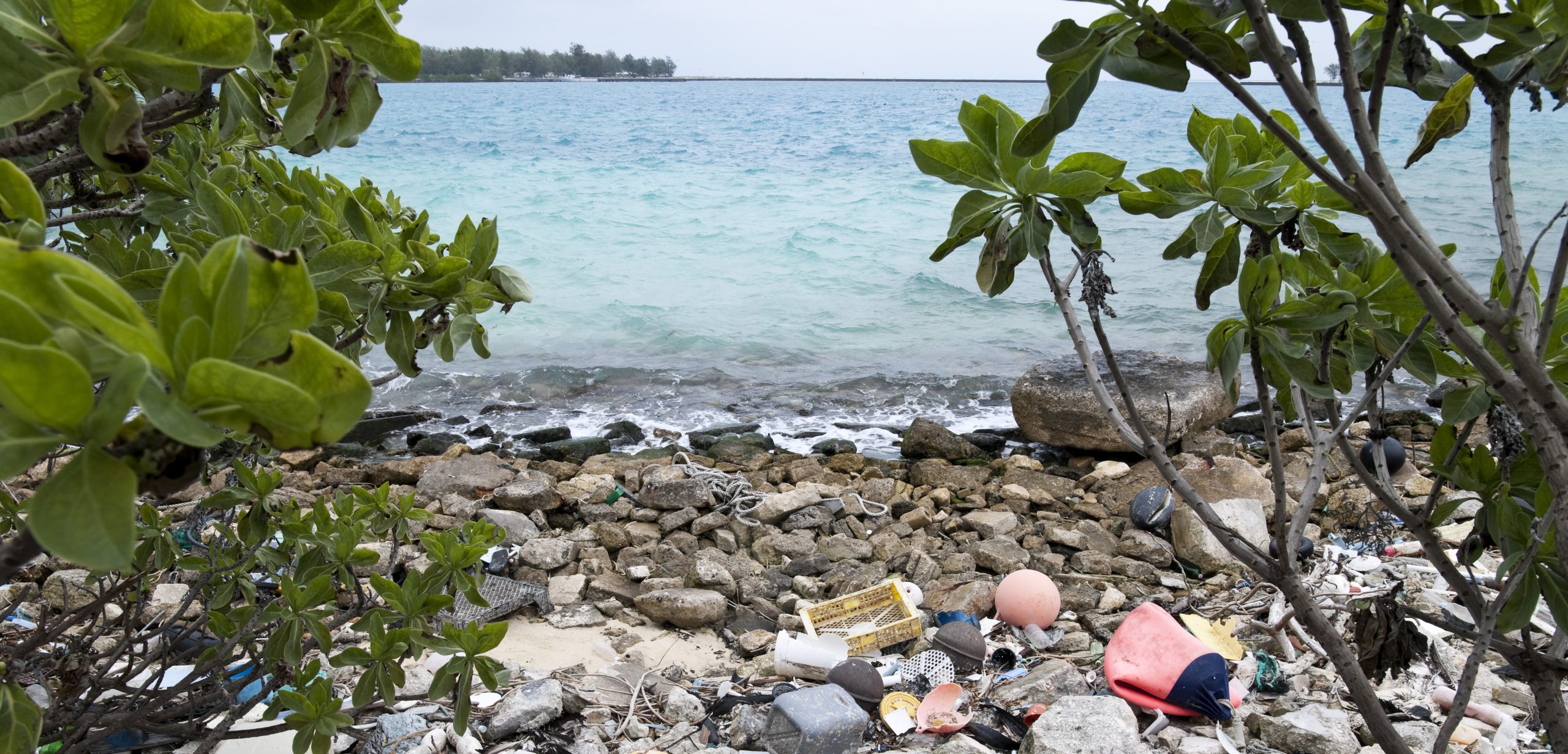Hitching a Ride on the Great Pacific Garbage Patch
Fish may be rafting to Hawaii on plastic debris.
Article body copy
The Indo-Pacific sergeant fish hides in the reefs of warm coastal waters from Japan to New Zealand to the Persian Gulf. The small tropical fish spends most of its life eating plankton and rarely ventures far from shore. Yet, one day in 1991, an Indo-Pacific sergeant showed up in Hawaii—far, far from home.
Two decades on, the species lives throughout all 2,600 kilometers of the Hawaiian Islands. Not only is the Indo-Pacific sergeant spreading, it’s mating with the local species of sergeant fish. In some areas, nearly a third of Hawaii’s sergeant fish are now hybrids of the two species. If the trend continues, the native Hawaiian sergeant fish could go extinct.

The Hawaiian (left), Indo-Pacific (right), and hybrid (center) sergeant species . Photo courtesy of Keoki Stender
But how did this little fish make it more than halfway across the Pacific Ocean? Trash, says Richard Coleman, a graduate student in ecology at the University of Hawaii at Manoa.
He thinks the fish are floating along with the plastic that’s being swept into the Great Pacific Garbage Patch. He can’t say this is 100 percent the case, but the anecdotal evidence and the sheer volume of debris in the ocean makes plastic a likely culprit.
The Indo-Pacific sergeants are not just floating to Hawaii, Coleman says. “If they were floating here, they would have arrived a thousand years ago. They’ve never arrived before, so something is facilitating their movement into Hawaii. The likely suspect is the debris.”
Hank Carson, who studied marine debris for his postdoctoral research, has firsthand experience to support Coleman’s hypothesis. On a series of research trips through the Pacific garbage patch he found nine species of fish rafting in the garbage. Some, like mahi mahi, were fish that made sense to be there. Others, like the sergeants he found, were unexpected.
Carson found sergeants jammed together in overturned plastic crates and other objects that offered protection. At one point, Carson’s team scooped a fetid jacket out of the water. On a dare, Carson slipped it on. When he looked in the pocket, he found a live sergeant fish hiding in the safety of the folded fabric.
“To jump off the ship in 5,000 feet [1,500 meters] of water, thousands of miles from land, and find this really diverse community sitting on this mass of ropes and nets, or on a crate of floating plastic…” says Carson. “It’s just a fascinating community.”
Nancy Wallace, director of the United States National Oceanic and Atmospheric Administration’s marine debris program, says that while organisms rafting across oceans with debris is a concern, it appears to be rare. The most common way species make the journey is if they have been living on or around items floating near the coast. If these objects suddenly detach, the organisms are swept away, too. For instance, after the 2011 tsunami in Japan, researchers found debris harboring Japanese sea life in Hawaii and on North America’s west coast.
What worries Coleman, he says, is that as the amount of plastic in the ocean increases, so too does the possibility that fish or invertebrates will float along with it. Now, he and other researchers from the University of Hawaii are looking to find out what else might be rafting over to Hawaii aboard the trash. It’s just another consequence of marine debris, an issue that affects ecosystems worldwide, he says.
“There’s all this trash in the water, no one’s taking responsibility for it, and it’s being ignored. We can’t ignore it anymore,” he says. “This is going to have a very devastating ecological consequence if we continue to sidestep it.”

